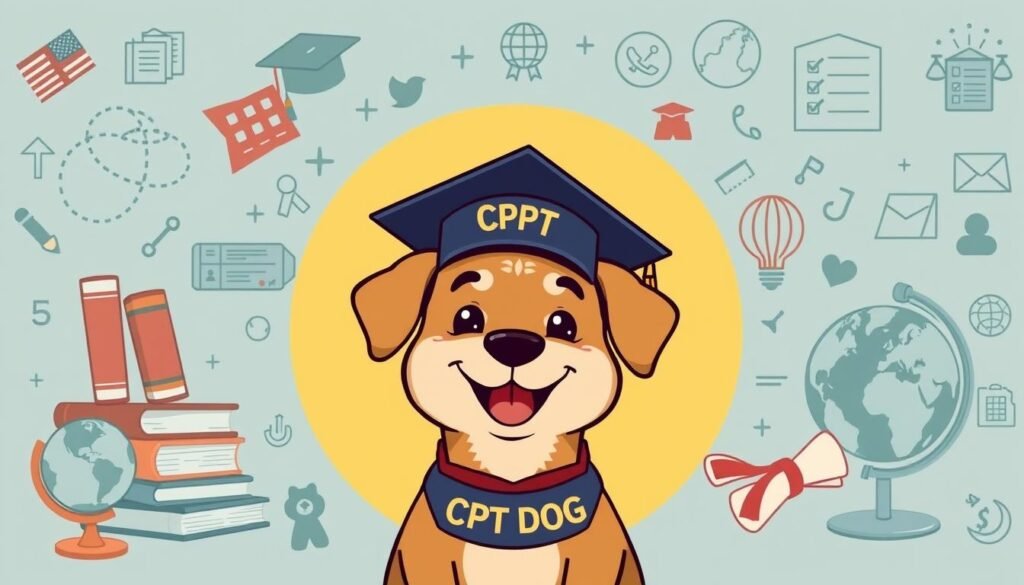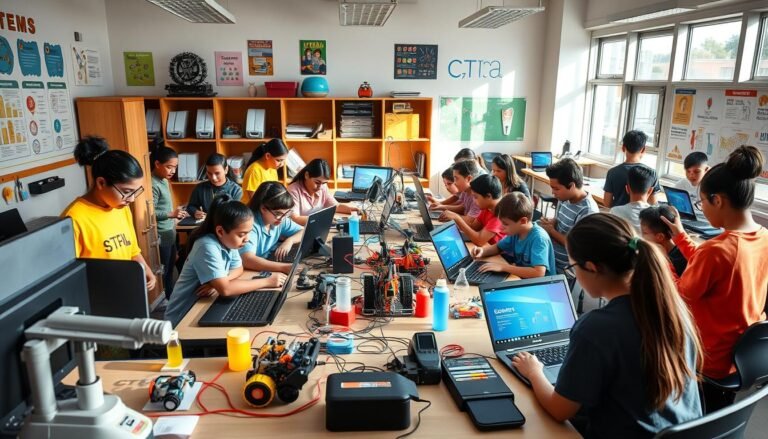As an international student in the U.S., you might wonder about Day 1 Curricular Practical Training (Day 1 CPT). It affects your H1B visa and green card applications. This is a big deal for those wanting to grow their careers while staying legal.
Understanding how Day 1 CPT, H1B, and green card applications work together is key. It’s vital for your success in the U.S. job market.
Key Takeaways
- Full-time Day 1 CPT usage can jeopardize your Optional Practical Training (OPT) eligibility after completing your degree.
- USCIS may initiate Requests for Evidence (RFEs) during the H1B approval process due to concerns about potential visa fraud.
- Maintaining a valid F-1 status and meeting in-person class requirements are crucial for a successful transition to H1B or green card application.
- Enrolling in an accredited Day 1 CPT university with strong RFE support can help manage the risks associated with Day 1 CPT usage.
- Day 1 CPT may lead to additional scrutiny during the green card application process, underscoring the importance of proper planning and documentation.
Understanding Day 1 CPT and Its Regulations
Being an international student in the United States can be challenging. But, the Day 1 Curricular Practical Training (Day 1 CPT) offers a way to start working right away. It’s part of the F1 visa and lets students work in their field of study from the first day of school.
Definition of Day 1 CPT
Day 1 CPT lets students work as soon as they start school. It’s different from regular CPT, which needs at least a year of school first. With Day 1 CPT, students can start working on their first day of classes.
Eligibility Criteria for Day 1 CPT
- Enrollment in a qualifying degree program, often at the graduate level or in STEM fields
- Maintaining a valid F1 visa status throughout the duration of the program
- Attending a specified number of in-person classes per semester, as required by USCIS regulations
Legal Framework Governing Day 1 CPT
The rules for Day 1 CPT say it’s for gaining new skills or knowledge, not just for work. Students can’t get a U.S. degree they’ve already earned. The DSO handles the approval, making it quicker than USCIS.

“Day 1 CPT programs are often aligned with graduate-level or higher degree programs in STEM fields, providing international students with immediate work opportunities to complement their academic studies.”
Benefits of Day 1 CPT for International Students
Day 1 CPT, or Curricular Practical Training, is a great chance for international students in the U.S. It lets you start residency preparation, get work experience, and boost your career advancement early on.
Immediate Work Opportunities
Day 1 CPT lets you dive into internships and jobs right away. You don’t have to wait a whole year. This early start helps you use what you learn in class in real life and get better at specific skills.
Skill Development and Job Experience
Day 1 CPT gives you real-world work experience that’s key for your residency preparation and career. You’ll improve your skills, make professional contacts, and might even get job offers before you graduate. This sets you up for success in your career advancement.
Networking Potential in the Industry
Day 1 CPT also helps you make connections in your field. Working with experienced professionals lets you grow your network, learn new things, and find more work experience or career advancement chances.

“Day 1 CPT has been a game-changer for me. It allowed me to hit the ground running and gain hands-on experience in my field of study, all while building a professional network that has been crucial for my career advancement.”
– Sarah, International Student
Challenges Associated with Day 1 CPT
Day 1 CPT lets international students work right away. But, it also comes with risks and legal issues. The main worry is the extra attention from the United States Citizenship and Immigration Services (USCIS) about immigration status and visa fraud.
Employers might worry about hiring Day 1 CPT students. They fear the USCIS scrutiny and the immigration status complexities. This worry can make it hard for students to find good internships or jobs.
Also, using Day 1 CPT the wrong way can hurt a student’s chances for future visas. USCIS is strict about stopping visa fraud. Students must follow all F1 visa rules to stay legal. Keeping records of work and assignments is key for dealing with USCIS requests.
Potential Risks and Legal Complications
- Day 1 CPT is legal if it follows USCIS rules, but fraud is common.
- USCIS might deny a change to H-1B status if Day 1 CPT is misused. This could lead to serious problems.
- Students who misuse Day 1 CPT might face big hurdles later. They could be barred from re-entering the U.S. for 3 years or 10 years.
Employer Concerns and Perceptions
Employers might be cautious about hiring Day 1 CPT students. They worry about the immigration status complexities. This can limit students’ chances for internships and jobs, affecting their career and networking.
Impact on Future Visa Applications
Abusing Day 1 CPT can harm a student’s future visa chances. USCIS might ask for more evidence or deny the application. This makes it harder for students to move to other visa types after graduation.
To avoid these problems, international students need to understand Day 1 CPT’s legal rules. They should choose programs from universities known for following USCIS rules. Getting advice from an immigration lawyer can also help keep their status valid.
Day 1 CPT’s Influence on H1B Applications
As an international student, applying for an H1B visa can be tough. But, your Day 1 CPT experience can help a lot. It might make USCIS look closer at your application. Yet, it’s a chance to show off your skills and work history.
How Day 1 CPT Affects H1B Application Process
Day 1 CPT might make USCIS ask more questions about your H1B application. They’ll check if your training fits with your studies. Keep all your Day 1 CPT records, like flight tickets and work assignments, to prove your experience is relevant.
Strategies to Strengthen Your H1B Application
- Choose a Day 1 CPT university with good RFE support. They can help a lot with your H1B application.
- Get advice from a skilled immigration attorney. They know the H1B lottery well and can make your application strong.
- Show how your Day 1 CPT skills match the job you’re applying for. This makes your application more appealing.
Pros and Cons of Using Day 1 CPT for H1B
The H1B visa lottery is tough, with only a 25% chance of getting a visa. Day 1 CPT is a good way to stay in the U.S. while waiting for lottery results. It lets you keep working and gaining experience, making your H1B application stronger.
But, there are risks with Day 1 CPT, like USCIS rules on training length and visa future issues. Plan carefully and follow program rules to avoid problems.
“Day 1 CPT can be a valuable asset in your H1B application, but it’s crucial to navigate the process carefully and seek the guidance of an immigration attorney to ensure your success.”
Transitioning from Day 1 CPT to Green Card Applications
As you move from Day 1 CPT, you might want to look into getting a permanent residency through an employment-based green card. This journey can be complex, but with the right help, you can reach your goal of getting a green card.
Pathways to Permanent Residency
The green card application process has several steps. You’ll need to get a PERM labor certification, file an I-140 immigrant petition, and then apply for I-485 adjustment of status. Your qualifications and the green card quota will determine which visa category you’re eligible for, like EB-5, EB-3, or EB-2.
Considerations for Adjusting Status
Keeping your immigration status valid is key during the green card application. You might need to extend your current visa or switch to a different status, like F-1 or H-1B. Getting legal advice can help you understand the adjustment of status process better.
Importance of Timing and Documentation
Timing is very important in the green card application. You can file your I-485 adjustment of status at the same time as your I-140 immigrant petition. Having all your documents, like financial statements and educational credentials, ready can make the process smoother and increase your chances of success.







